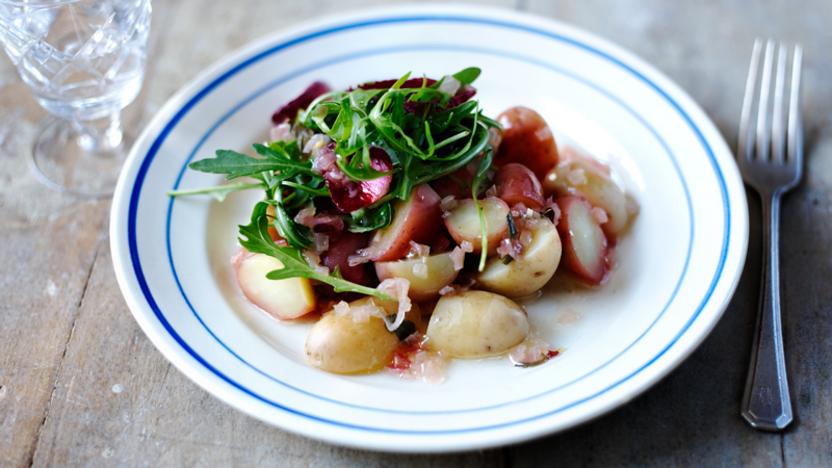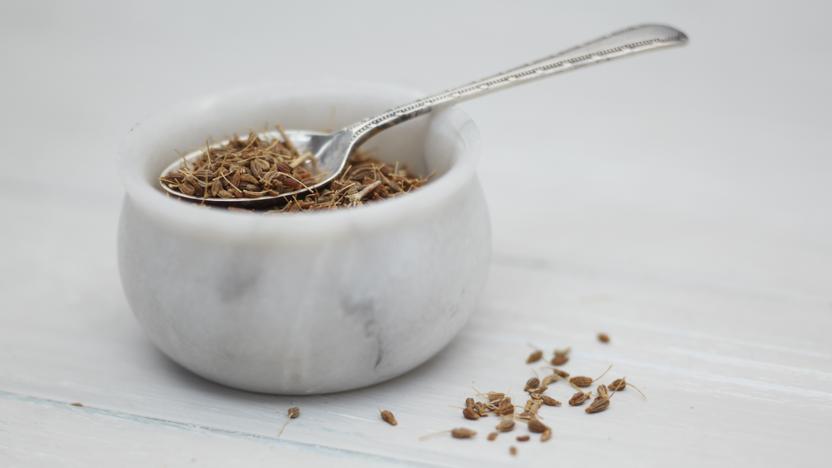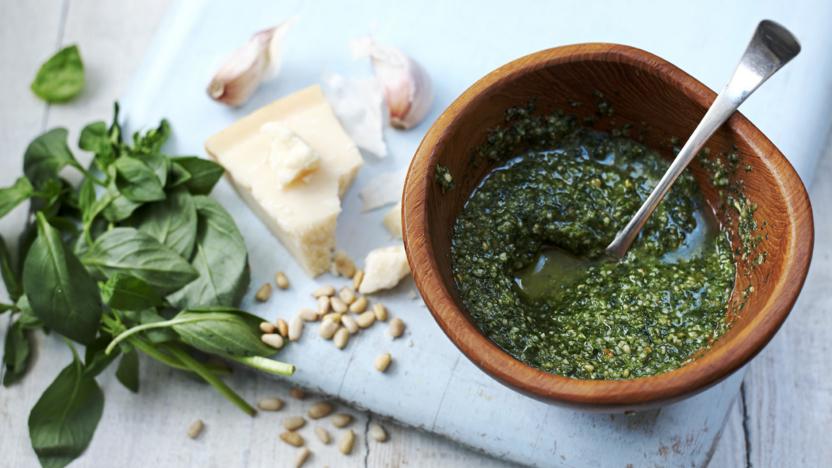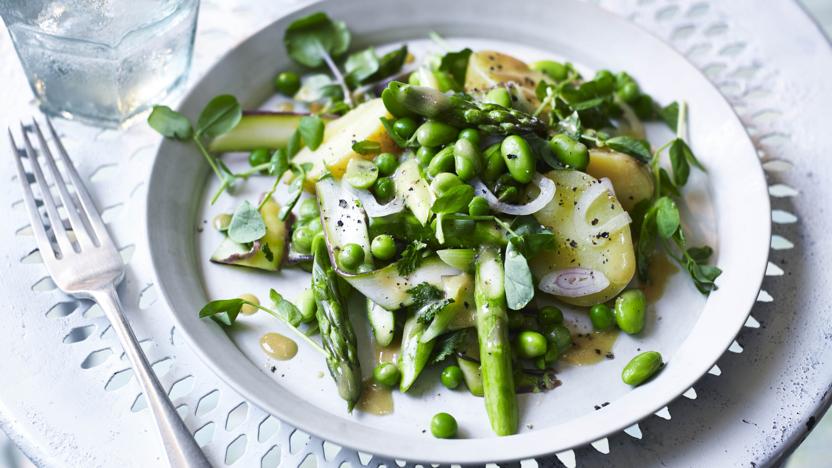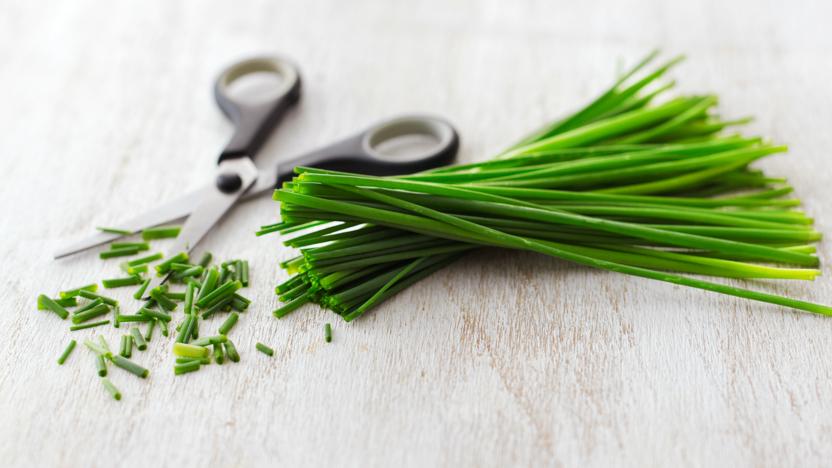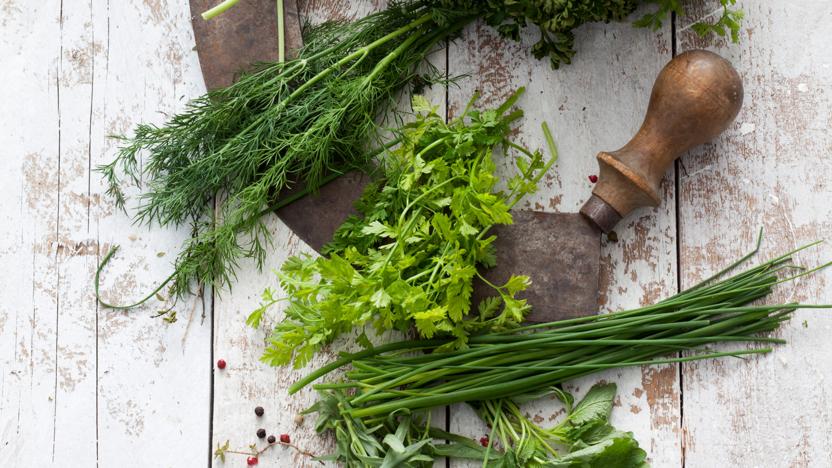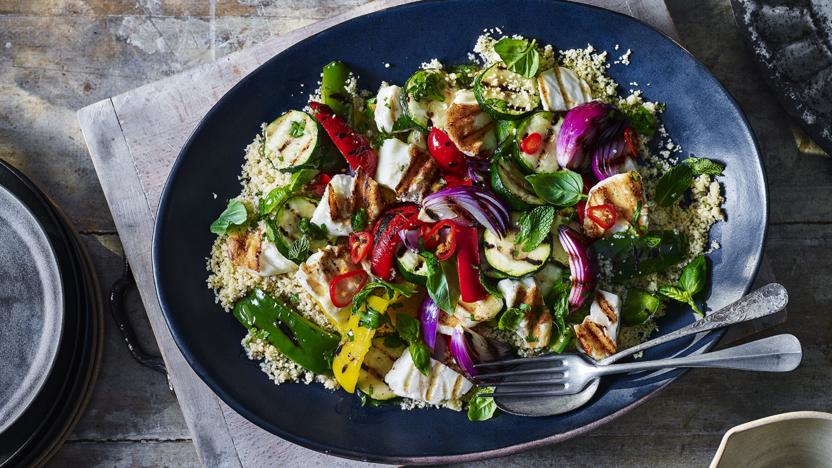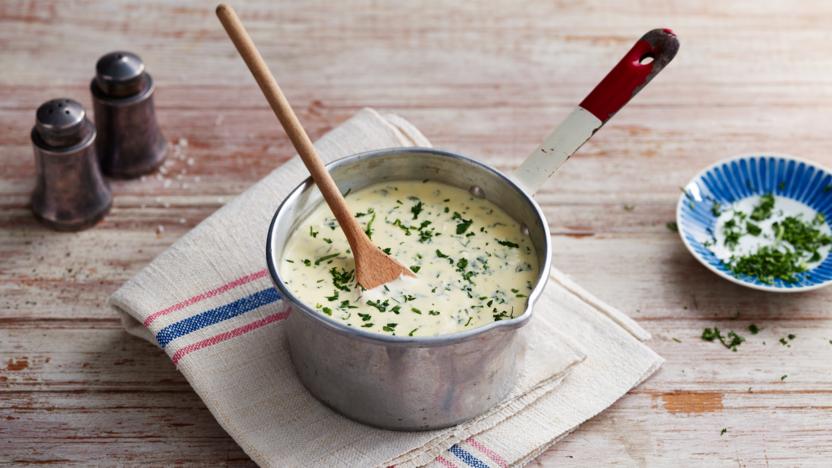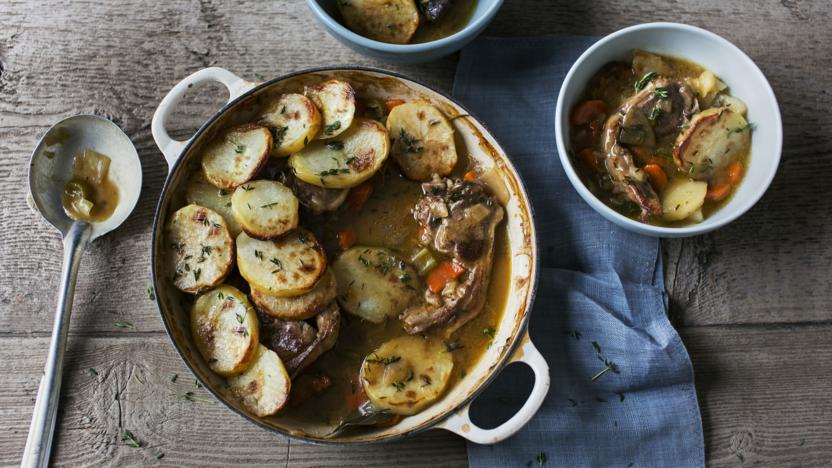Sorrel recipes
The name sorrel is used to describe several related plants, including wild sorrel and French sorrel. Its name derives from the French for 'sour', in reference to the plant鈥檚 characteristic acidity. The leaves of the sorrel plant are the part used in cookery. Sorrel leaves are generally large, bright-green and arrow-shaped with a smooth, crisp texture. Buckler leaf sorrel has tiny, shield-shaped leaves that are good in a mixed green salad or as a garnish. All sorrel is incredibly sour with a lemony flavour and it shouldn鈥檛 be eaten in large quantities as it contains a high amount of oxalic acid.
Preparation
Because of its bitter flavour, sorrel is often combined with other ingredients. It can be eaten raw in salads or cooked in soups, pur茅es and stuffings and goes particularly well with fish and egg dishes. The sourness of this herb also complements most types of fish, especially oily varieties such as salmon and delicate white fish such as lemon sole; it's also a natural ally of shellfish such as crab and lobster. Try adding butter and chopped fresh sorrel to the pan once the fish has been fried, then serve the pan juices drizzled over it. If fish isn't your thing, add sorrel to a roast chicken or Spanish tortilla, or chop it into a simple goats' cheese salad. Blanch the leaves before use if they taste too sharp.
